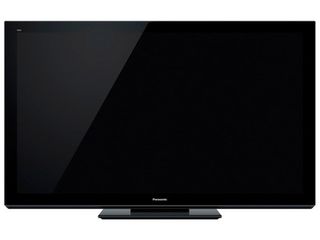Why you can trust TechRadar

The Panasonic TX-P50VT30B's NeoPDP panel is indeed something special for both 2D and 3D.
Firstly, it handles motion exceptionally well; a scene from our test disc District 9 involving several fast-moving shoulder shots didn't show up any significant motion blur (but perhaps the odd artefact) while film judder wasn't evident either.
The lack of blur is critical, because it helps the HD images retain their maximum detail and full impact. All the while, the Panasonic TX-P50VT30B supplies pictures that swim in exceptional colour and high detail, although the overriding sense is one of crispness.
During a shot featuring both light and dark areas, the Panasonic TX-P50VT30B excels; peak whites revel in brightness while heavily shadowed areas of the image are deep, yet detailed. Take that, light-emitting diodes! Overall, we're happy to say that we've not seen pictures this good before.
It doesn't take much more than the opening sequences of Avatar before we realise that this is a truly special screen for watching 3D, too. There's really only one word to describe it: spotless. With no crosstalk or ghosting, we're left to enjoy the sublime depth, although there is the continuing issue of contrast.
The 3D glasses increase the depth of black, which is in theory very welcome. However, when compared to a 2D image, those 3D specs do remove some detail. During a shot of Pandora from space, the surrounding starlight doesn't look quite black enough in 2D, but it does contain a lot of faintly red-ish detailing of far-off galaxies.
Switch to 3D and the blackness gets more convincing but the galaxies completely disappear. This kind of crushing is to be expected, but the constant removal of brightness can be detrimental to the overall picture; it's an issue that needs some work if active shutter 3D is to advance.
Down the quality scale to digital TV and it's another batch of highly watchable pictures. Stretched to 50 inches, images from BBC Two's Autmnwatch Live are surprisingly enjoyable, although we did experiment successfully with the Panasonic TX-P50VT30B's digital noise reduction setting to smooth the edges and reduce some artefacts.
Finally, although we're assured over and again that screen burn is a thing of the past in the plasma world, we did notice the remnants of a Sky News logo in the top right-hand corner of the panel. Given that this particular sample has 'done the rounds' and clocked up hundreds of hours use, it's a fair assumption that image retention is an issue.
Our advice to counter this only very slight problem (it didn't affect our enjoyment and was really only visible on a blank screen) is to avoid leaving the TV on one channel for hours and hours at a time. Who watches Sky News all day anyway?
Jamie is a freelance tech, travel and space journalist based in the UK. He’s been writing regularly for Techradar since it was launched in 2008 and also writes regularly for Forbes, The Telegraph, the South China Morning Post, Sky & Telescope and the Sky At Night magazine as well as other Future titles T3, Digital Camera World, All About Space and Space.com. He also edits two of his own websites, TravGear.com and WhenIsTheNextEclipse.com that reflect his obsession with travel gear and solar eclipse travel. He is the author of A Stargazing Program For Beginners (Springer, 2015),


